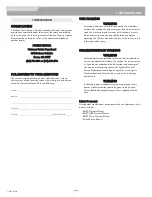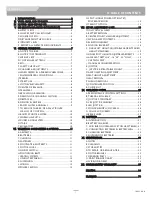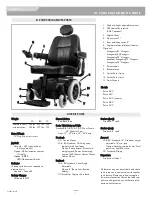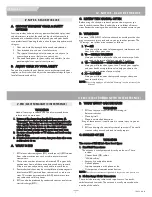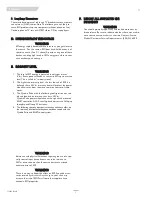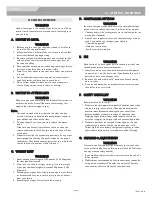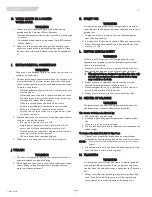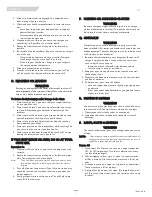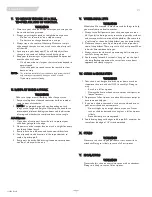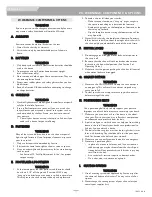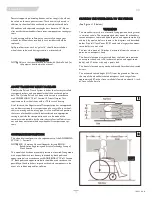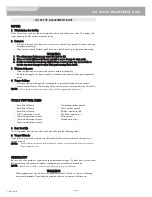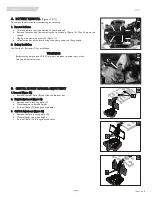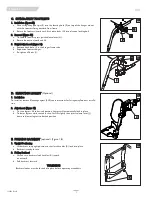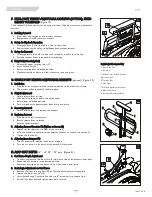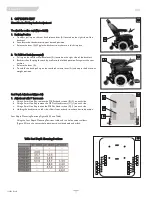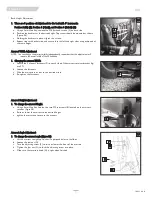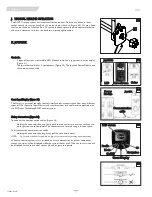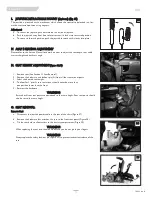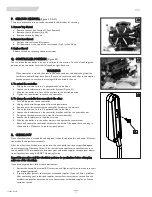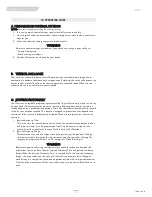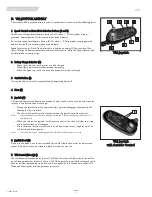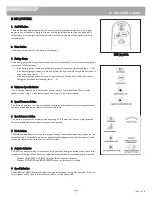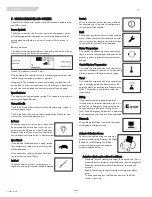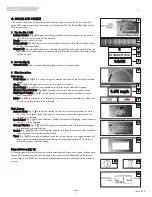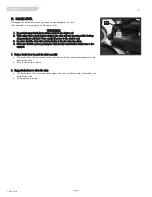
119832 Rev. B
15
E N G L I S H
SEATING SYSTEM
WARNING
This wheelchair has been tested for seating in a motor vehicle with the
factory installed seating system only.
Ensure that the factory installed seating system is secured to the wheel-
chair frame before operation. Refer to the seating system owner’s manual
CAPTAINS SEAT TRANSIT OPTION
LOCKING PIN ACTIVATION (Figure 6,7)
WARNING
Captains seat must be used in conjunction with WC-19 Tie-down brackets.
1. Configuration for Standard use (Driving the Chair)
• Locking Pin Lever (A) should be Disengaged, (Figure 6)
• Backrest can be reclined or folded as needed.
2. Transit Configuration (Captains seat used in a vehicle)
• Locking Pin Lever (B) should be engaged, (Figure 7)
• Backrest is now in locked position (99°).
MAKE SURE TO ENGAGE LOCKING PIN FOR TRANSIT USE
POSITIONING BELTS (Figure 8,9)
WARNING
The angle of the pelvic belt should be within the preferred zone of 45 to 75
degrees to the horizontal or within the optional zone of 30 to 45 degrees to
the horizontal.
Steeper side-view pelvic belt angles are especially important if the pelvic
belt is intended to be used for postural support in addition to occupant
restraint in a frontal crash. Steeper angles will reduce the tendency for a
vertical gap to develop between the user and the belt due to compliance
of seat cushions and belt movement, thereby reducing the tendency for
the user to slip under the belt and for the belt to ride up on the soft
abdomen during normal use. Steeper belt angles also reduce the tendency
for upper-torso belts to pull the pelvic belt onto the abdomen during frontal
impact loading.
NOTE:
For this procedure, refer to figure 9
1. The pelvic belt should be worn low across the front of the pelvis.
2. Position the upper-torso belt(s) over the shoulders.
3. The belt(s) should not be held away from the body by wheelchair
components or parts, including but not limited to wheelchair arm-
rests or wheels.
4. Ensure the belt(s) are not twisted.
5. Adjust belts as firmly as possible, being mindful of user comfort.
6
7
VII.
A
B
8
9


